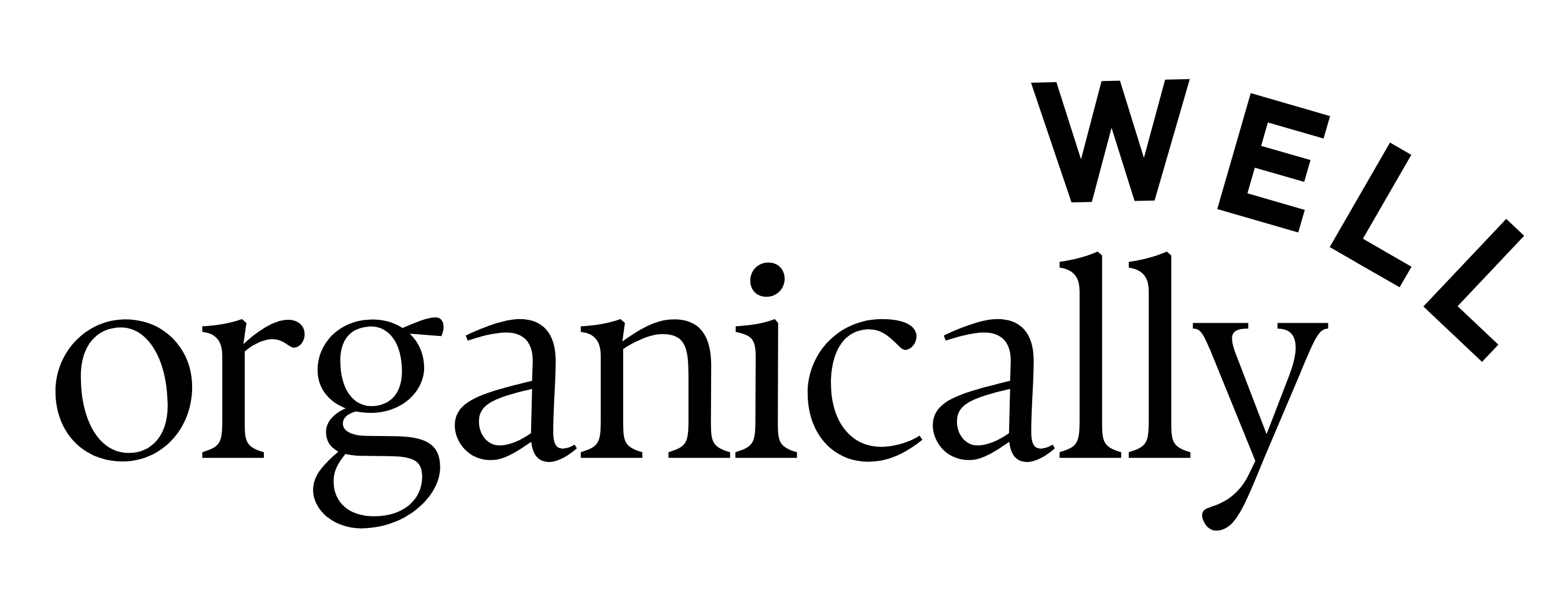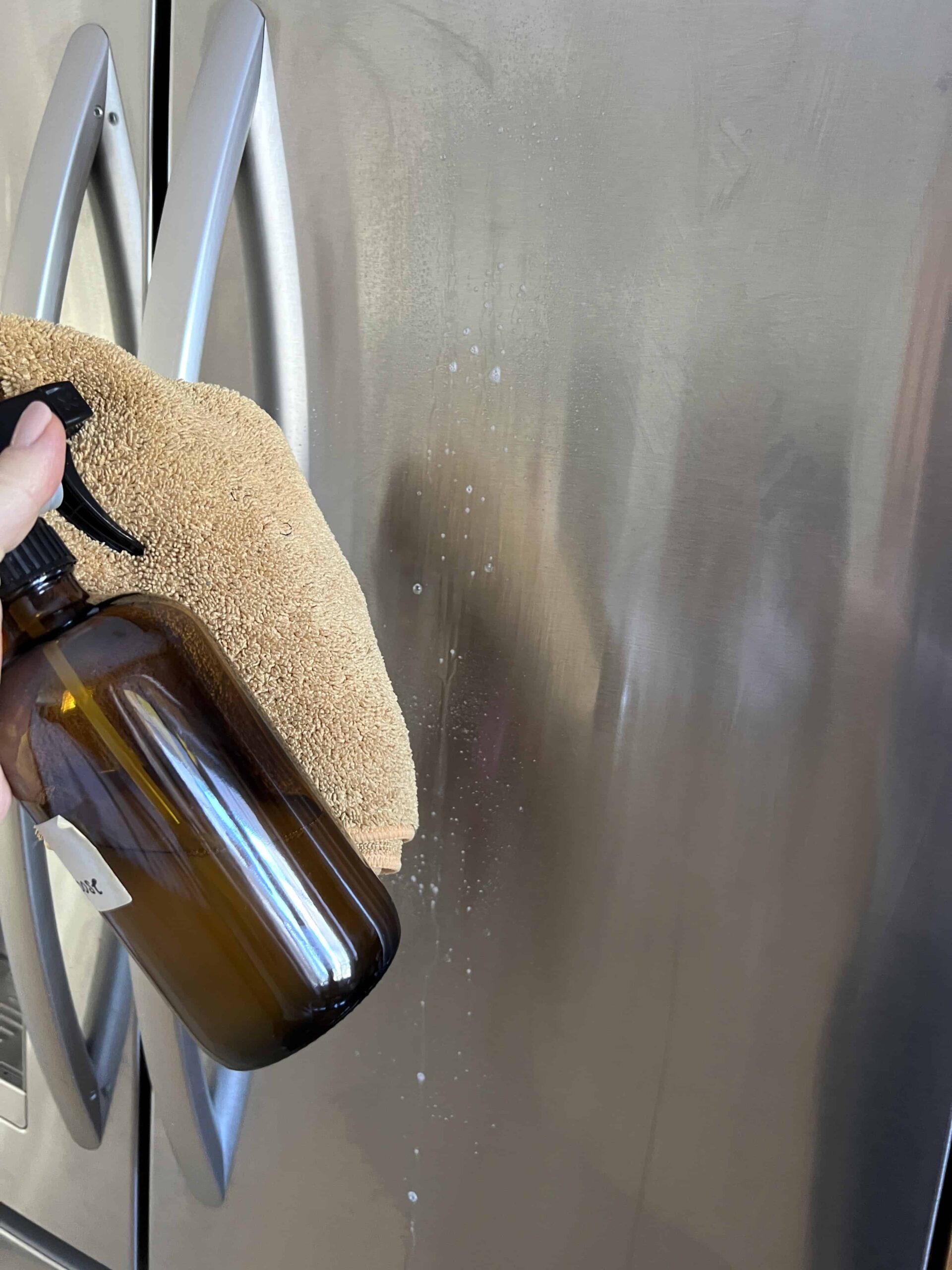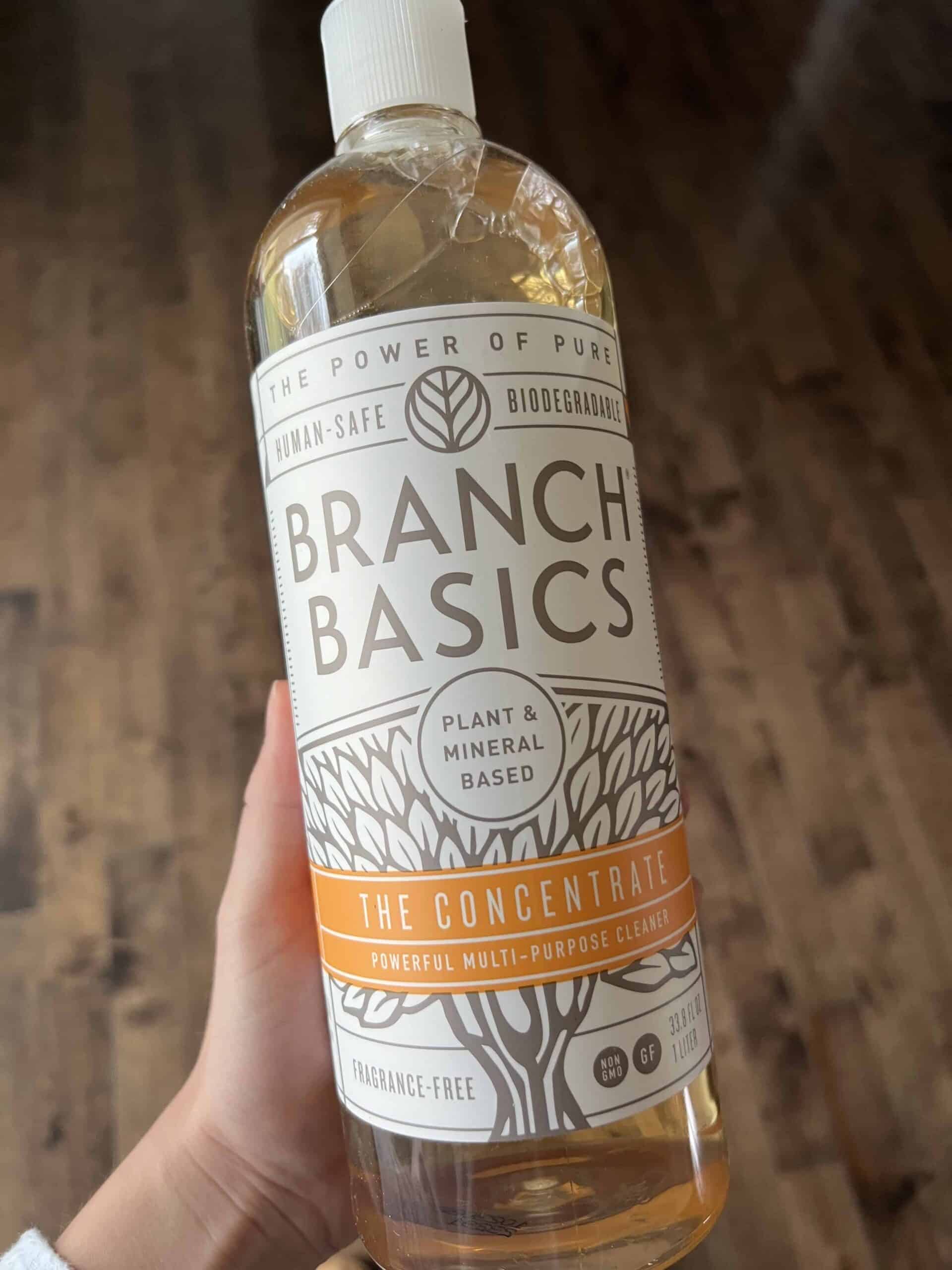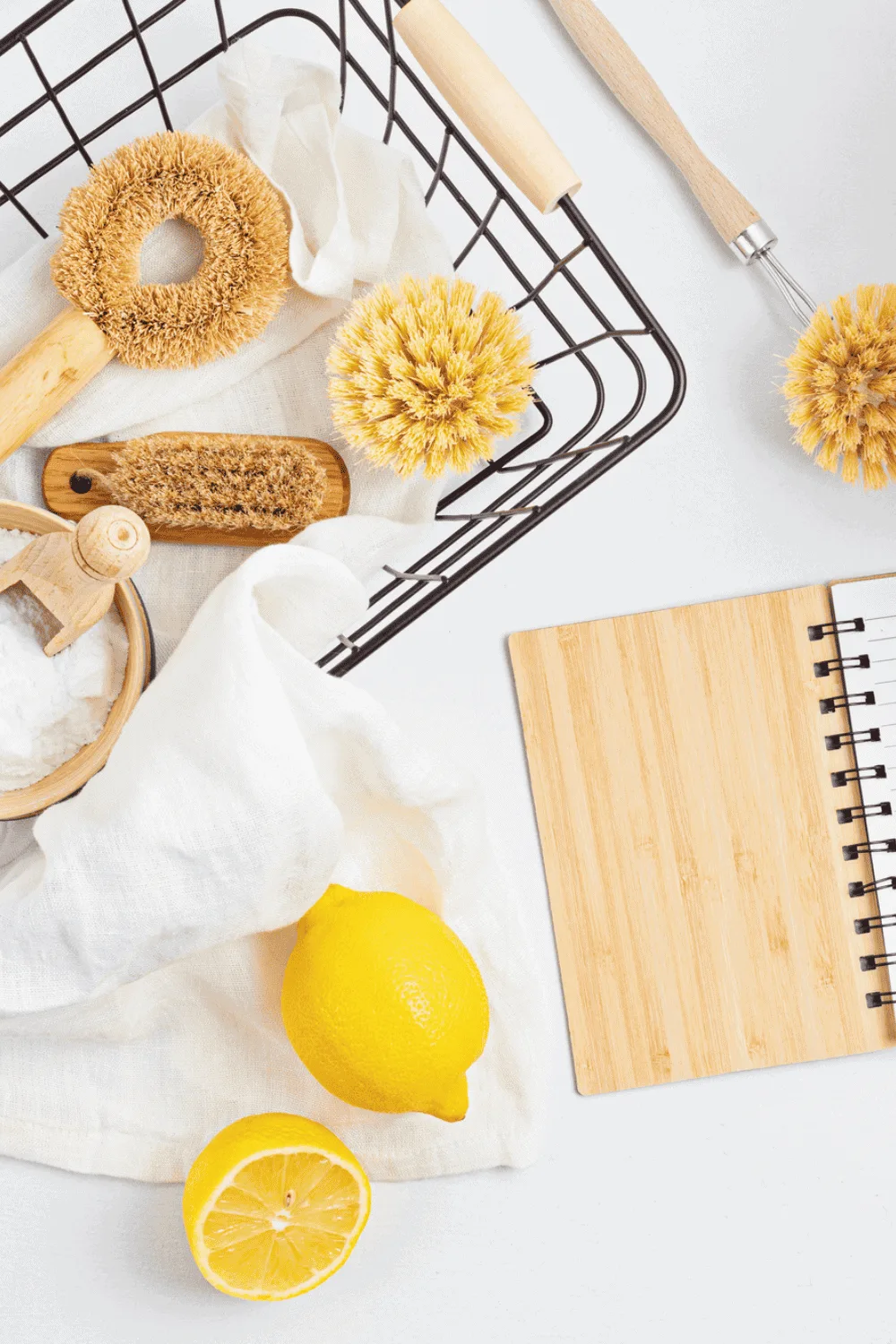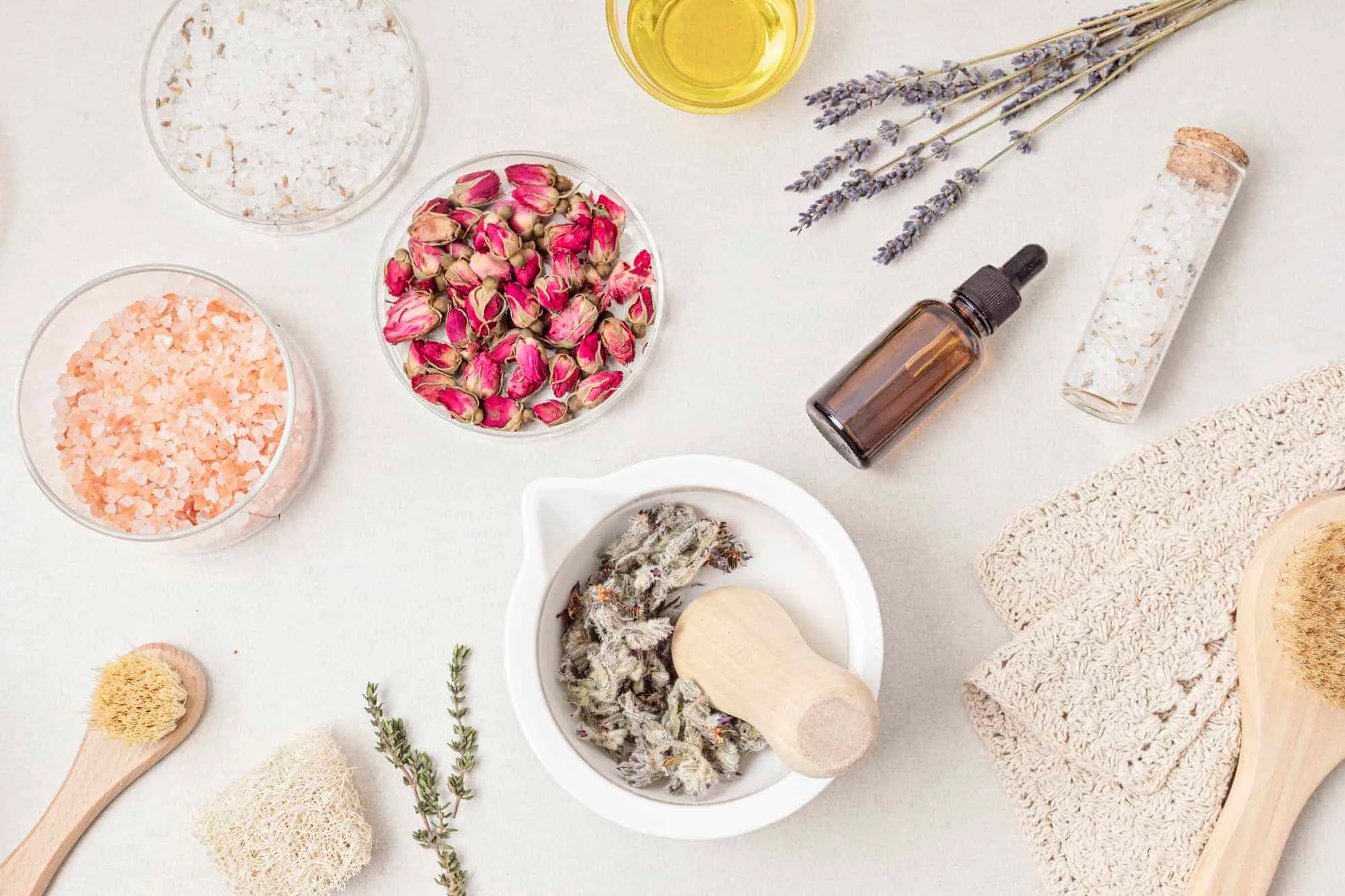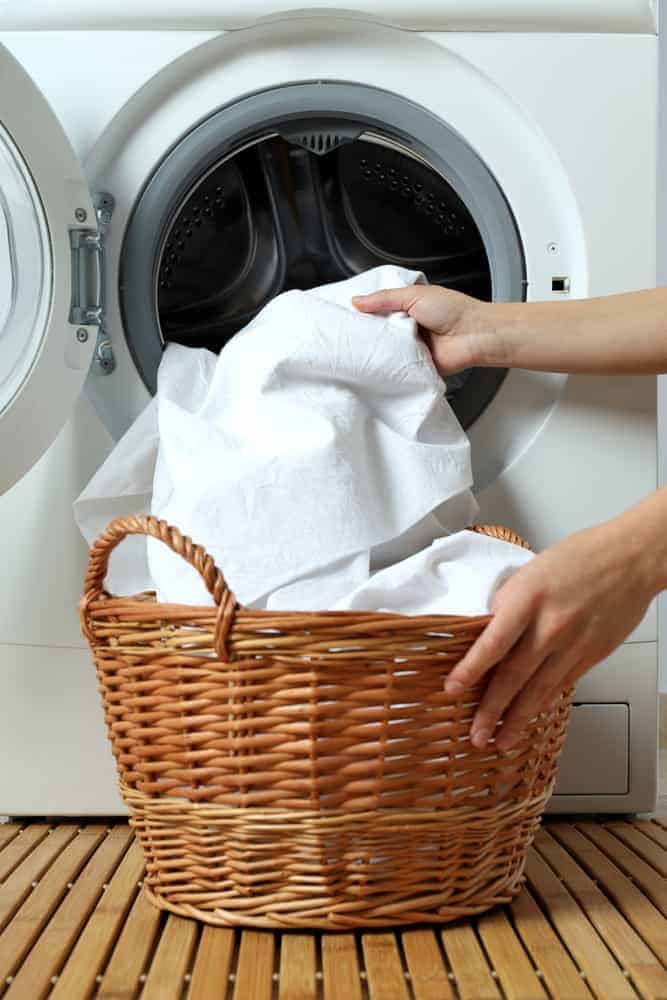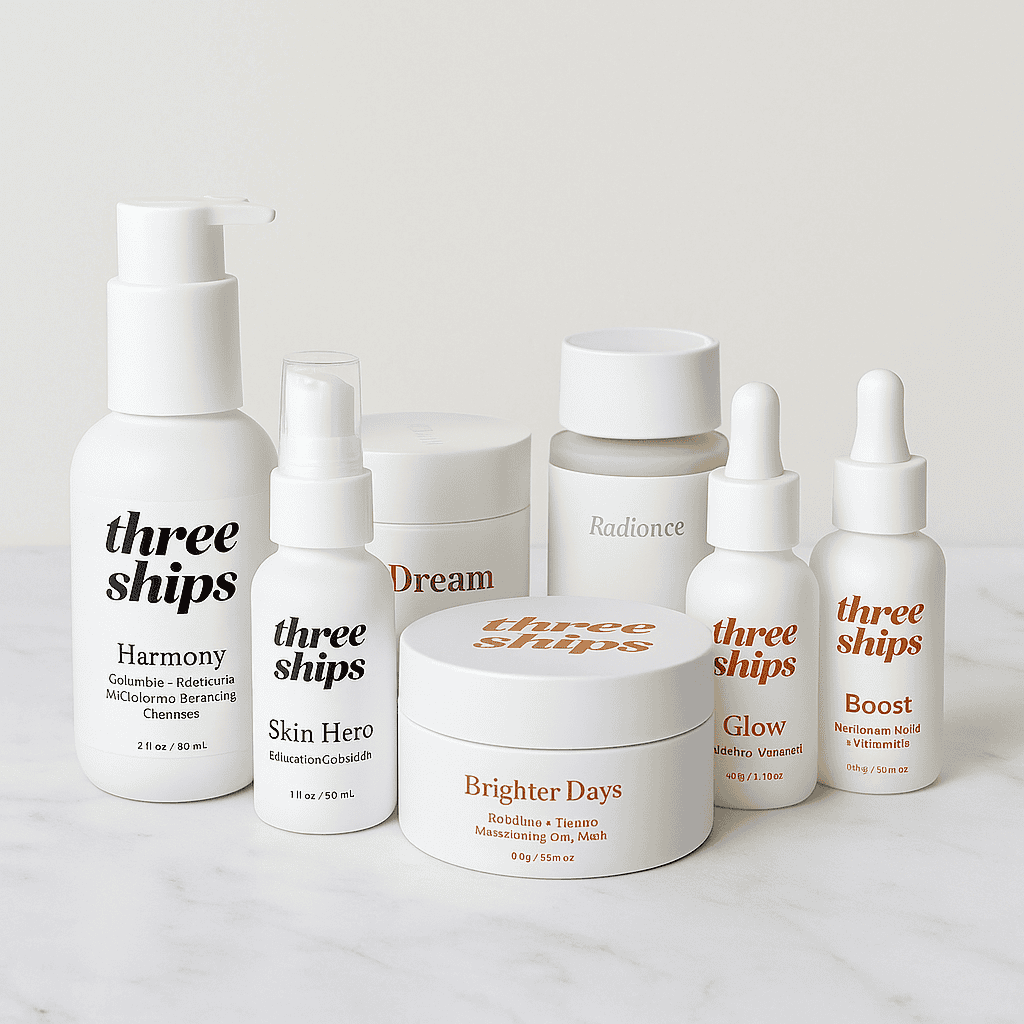DIY Non-Toxic Dish Soap Recipe (Cheap & Works Great!)
What if I told you that you can make your own non-toxic dish soap at home?
You’re probably shaking your head. Yeah, right.
Well, prepare to be surprised because all you need to make your own super easy, non-toxic dish soap is pure Castille soap, vinegar, baking soda and hot water.
I’m serious! And it works.
I’ve been living a low-tox lifestyle for a couple of years, and honestly, figuring out my dish soap has been one of the biggest challenges for three reasons:
- Conventional dish soap is full of harmful dyes, synthetic fragrances and ingredients
- Many toxin-free dish soaps are crazy expensive (Not sure about you, but I’m not thrilled to pay $20 for dish soap)
- Many toxin-free dish soaps DON’T WORK
I’ve tried and tested many non-toxic dish soap brands and never felt like I found a good “fit.” So, I started trying out recipes to make my own homemade, non-toxic dish soap.
And I did it!
This DIY dish soap recipe is completely toxin-free, works well, is super easy to make, and is inexpensive!
Ingredients You’ll Need
To make homemade toxin-free dish soap, you only need three ingredients, most of which are inexpensive pantry staples.
Ingredients You’ll Need
- 1/4 cup of Castile soap
- 2 tablespoons of baking soda (for extra grease-cutting power)
- 1 tablespoon of vinegar (for streak-free dishes)
- 2 cups of warm water
- 5 drops of lemon essential oil (optional)
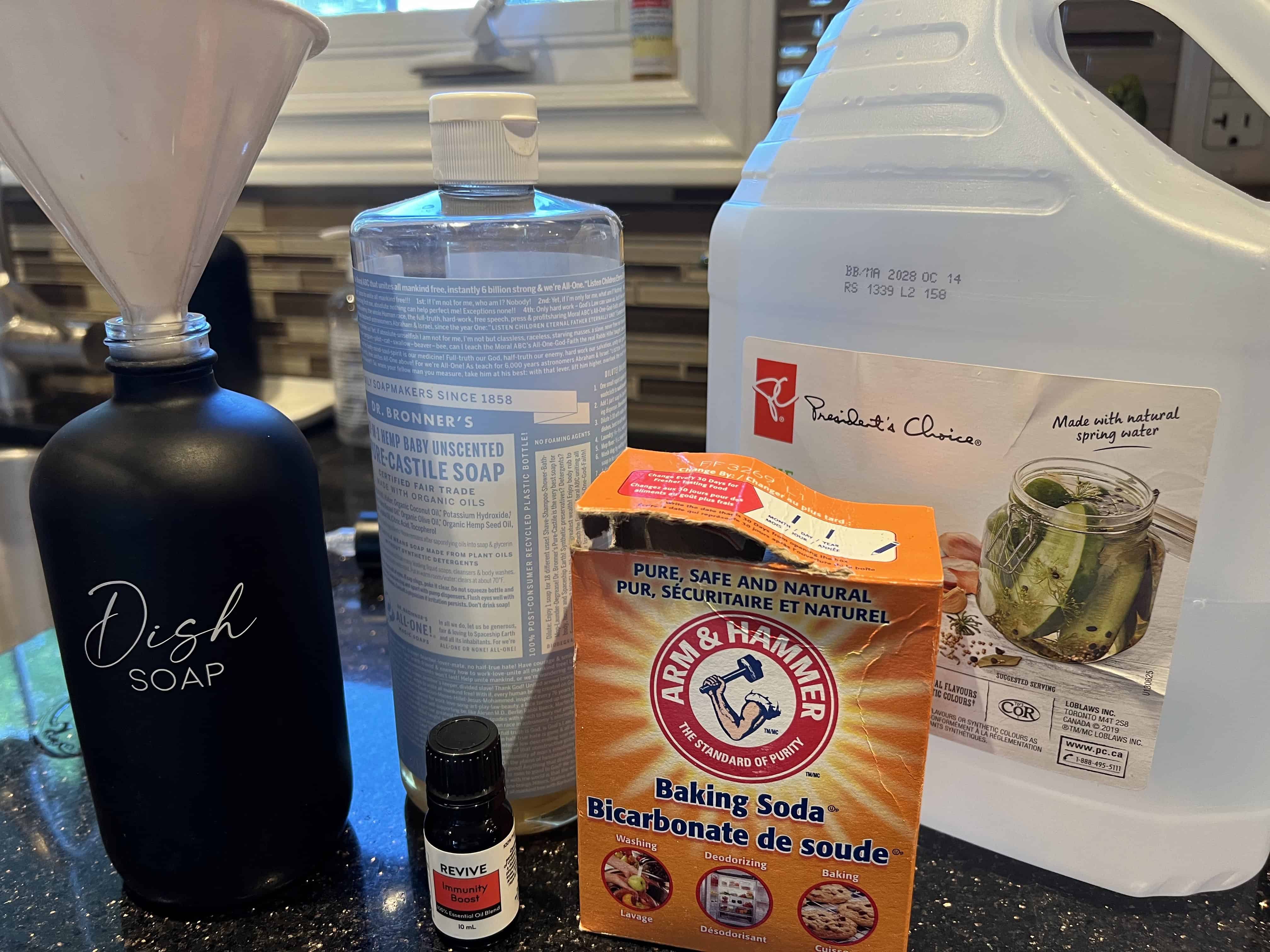
How To Make DIY Non-Toxic Dish Soap
Gather your ingredients and a jar or dispenser that you’ll be using.
Add the Castille soap to your bottle, followed by your vinegar, baking soda and essential oils (optional).
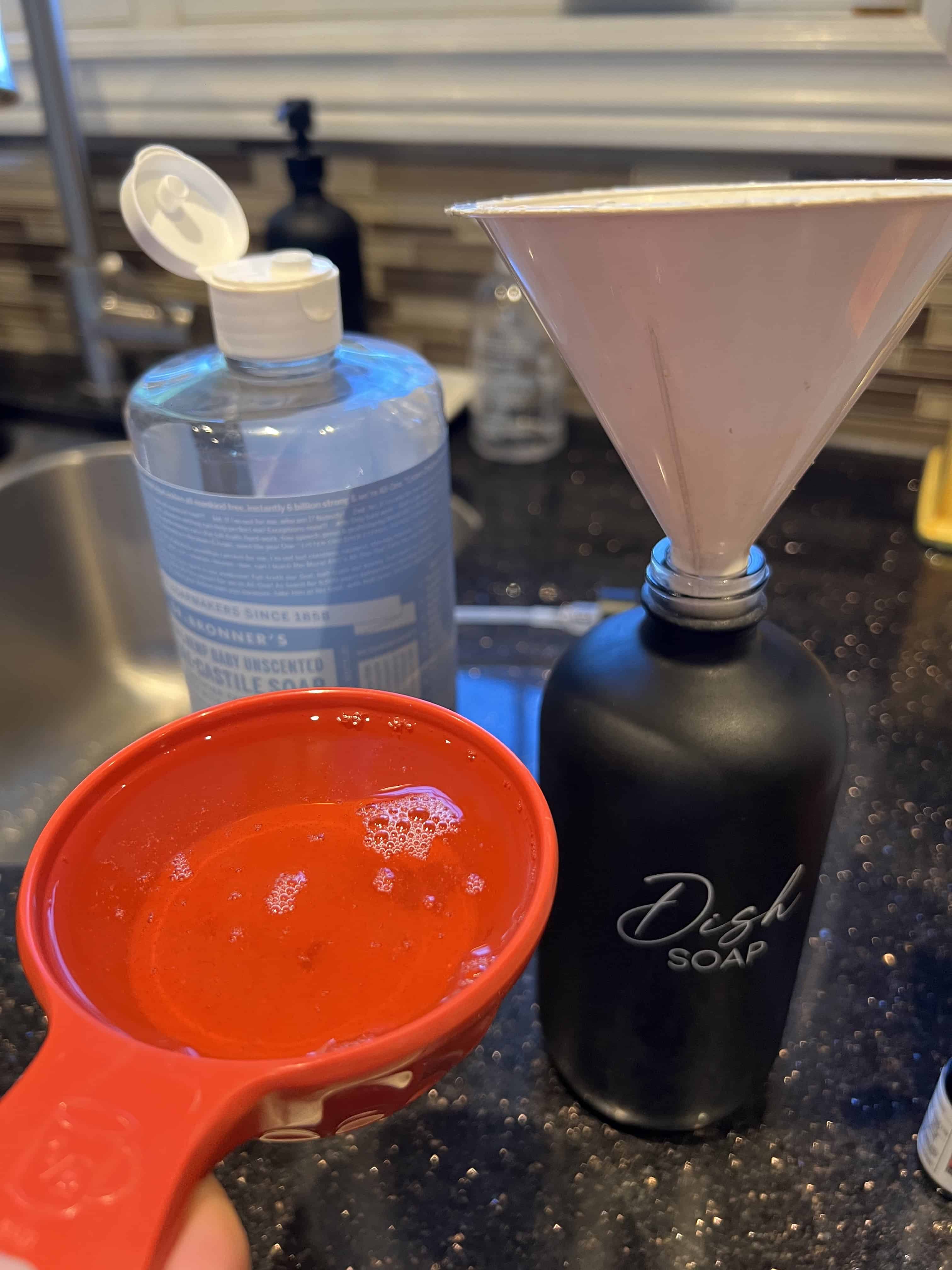
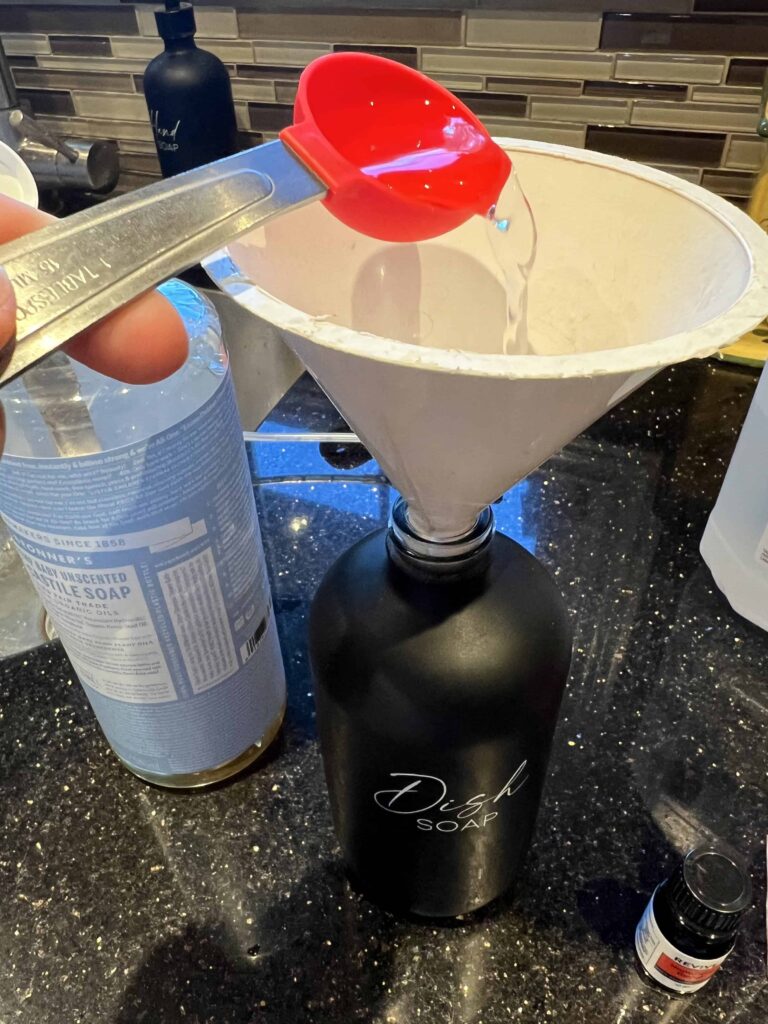
Fill the remainder of your bottle with hot water, close it, and gently shake it to combine all of the ingredients.
That’s it! It’s seriously so simple, and it works great. I’m especially grateful for this because finding a good, non-toxic dish soap has been a real challenge.
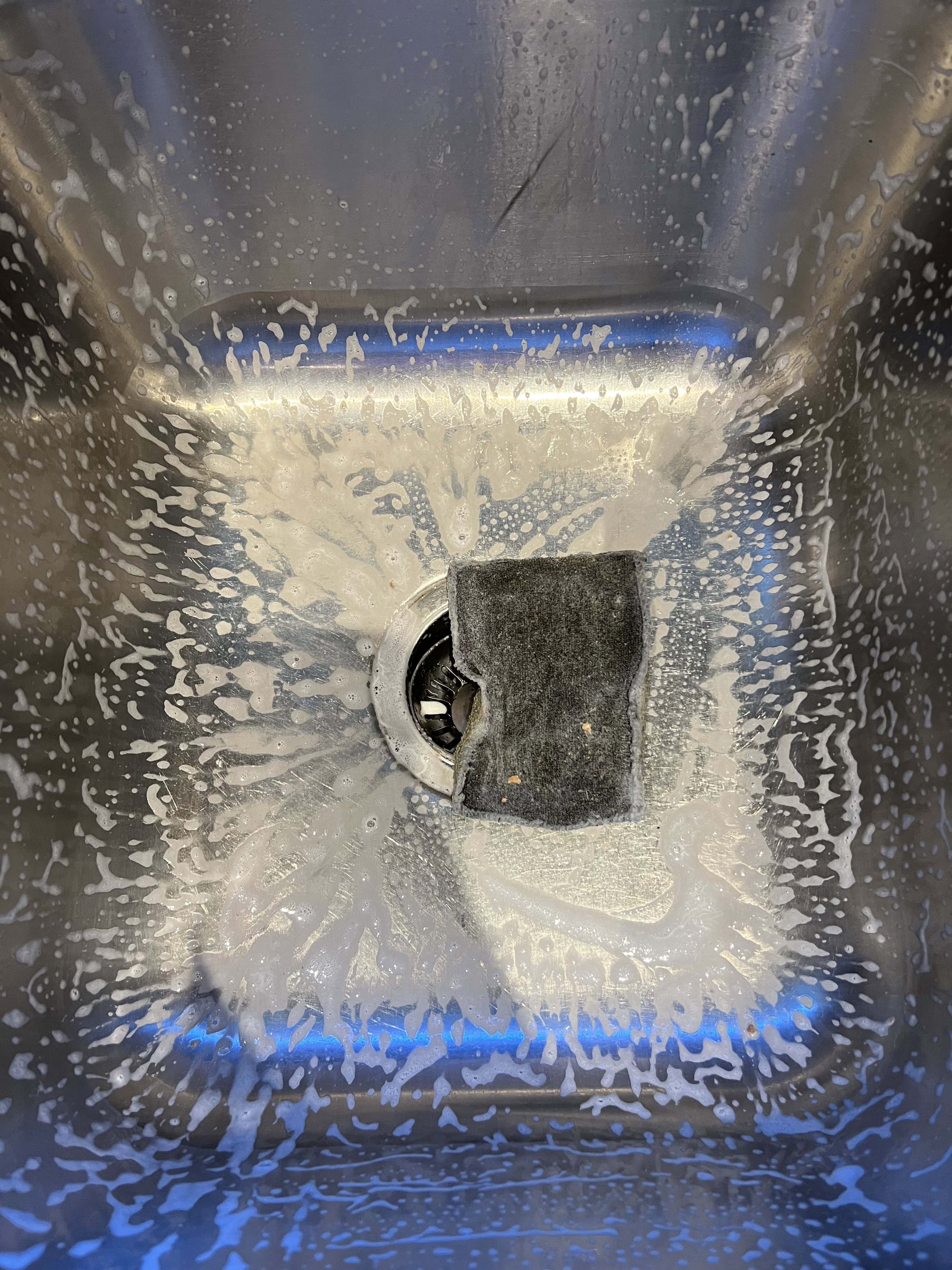
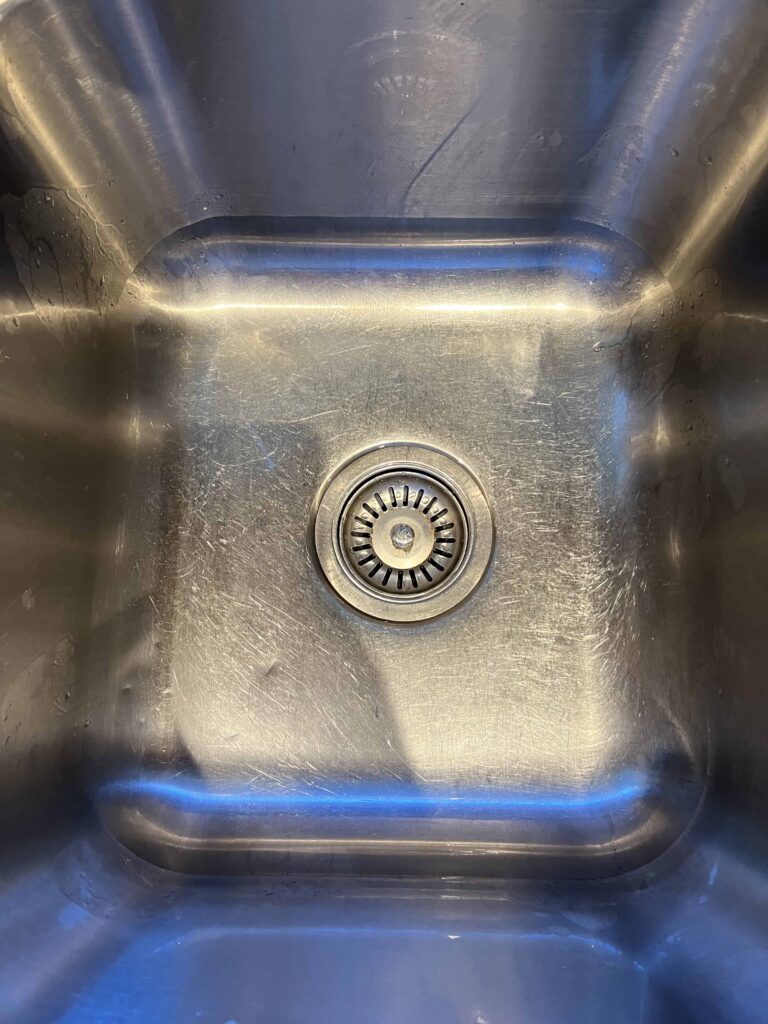
Harmful Ingredients In Conventional Dish Soap
Many people don’t realize that conventional dish soap is actually one of the most toxic cleaning products in their homes.
The same ingredients that make dish soap “tough on grime” also mean it contains harsh chemical solvents and preservatives that are tough on your body and health!
You definitely don’t want to use dish soap full of harmful chemicals to clean dishes and cookware on which you cook and eat your food!
Some common harmful ingredients to avoid in dish soap include:
Artificial Dyes
Most conventional dish soaps come in vibrant colours—neon yellow, green, red, or blue. This is a marketing tactic, but it can also be harmful to your health.
Many artificial dyes and colourants can cause irritation; some are even known carcinogens. For example, Brilliant Blue #9 or Yellow #5 are common colourants in dish soaps that pose risks to health, such as allergy, hyperactivity in children, carcinogenic contaminants, and genotoxicity.
So, yes. Having a colourant-free dish soap is essential when switching to a healthier alternative.
Synthetic Fragrance
Most dish soaps contain synthetic fragrances, which make them smell so “nice.” However, these scents are not so nice to our bodies.
The issue is that synthetic fragrances do not contain just one ingredient. They are actually a combination of dozens to hundreds of undisclosed chemicals.
Synthetic fragrances may cause skin and respiratory tract irritation, allergies, asthma attacks, headaches and migraines, nausea and vomiting, neurological effects and endocrine disruption.
This toxin-free dish soap recipe allows you to add a natural scent using pure essential oils, but it is otherwise 100% fragrance-free.
Sodium Lauryl Sulfate (SLS) & Sodium Laureth Sulfate (SLES)
These surfactants can irritate the skin and eyes, and SLES may be contaminated with a carcinogen called 1,4-dioxane.
Triclosan
An antibacterial agent that has been banned from use in hand soaps by the FDA in 2017. Unfortunately, companies can still legally add it to their dish soap formulas.
Triclosan is a very toxic ingredient that is linked to liver and respiratory toxicity and thyroid dysregulation. Its use has also been linked to an increase in antibiotic resistance due to its harsh antibacterial properties.
Formaldehyde
Sometimes found in preservatives like DMDM hydantoin and quaternium-15, formaldehyde is a complete carcinogen and can cause skin and throat irritation and respiratory issues.
Most dish soaps won’t explicitly list formaldehyde as an ingredient, but it will be present in other formaldehyde-releasing ingredients such as DMDM hydantoin, quaternium-15, methanol, methyl aldehyde, or methylene oxide.
Methylisothiazolinone
Used as a preservative in dish soap that has been linked to allergic reactions, skin irritation, immunotoxicity and neurotoxicity.
Phthalates
These are often used as fragrance enhancers and are associated with known endocrine disruptors with reproductive, developmental and neurological effects.
Going Toxin-Free
Reducing your exposure to toxins can have enormous effects on your health and well-being. Switching to a non-toxic dish soap is a big step toward eliminating many of these harmful ingredients that can seriously impact your health.
If you’re looking for more easy, non-toxic recipes, this DIY orange vinegar cleaner is my go-to all-purpose spray. This homemade foaming hand soap recipe is a staple in my house, and these eight DIY non-toxic cleaner recipes will help you clean your whole house without chemicals.
